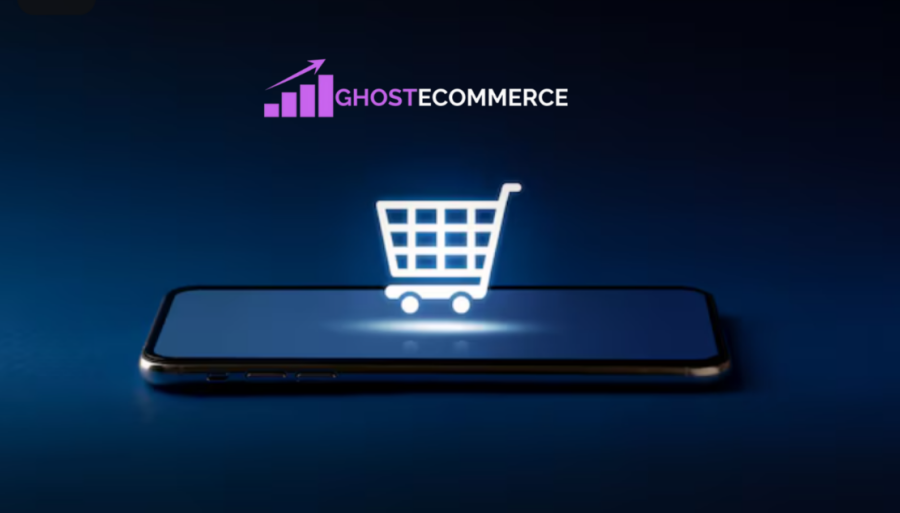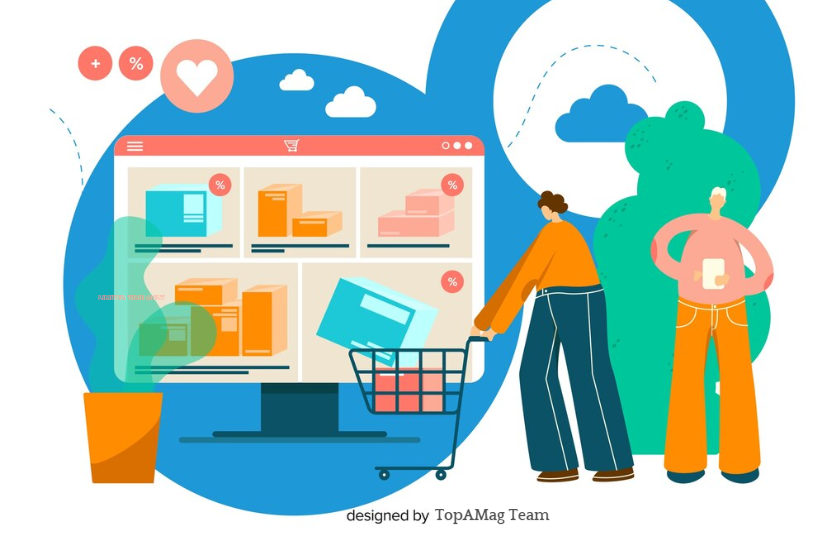In the rapidly evolving landscape of online business, a new term has surfaced. As digital entrepreneurship continues to expand, understanding the nuances of ghost commerce becomes crucial for both budding and seasoned entrepreneurs. This article By The TopAMag team delves into what is ghost commerce, its mechanisms, benefits, and how it stands distinct from traditional E-commerce models.
Key Takeaways
- Ghost commerce involves selling products online without physically handling or storing the goods.
- This model relies on partnerships with retailers or third-party platforms for product storage, packaging, and shipping.
- It significantly reduces operational costs and overheads associated with inventory management.
- The flexibility and scalability of this advanced model allow businesses to adapt quickly to market trends and expand their product range.
- Challenges include maintaining quality control and brand identity, as well as ensuring timely delivery through third-party suppliers.
- Advanced technology and automation tools are essential for the efficient operation of ghost commerce businesses.
- Its future is promising, with potential advancements in AI and machine learning further streamlining operations.
Understanding Ghost Commerce
” What is ghost commerce? “ At its core, It involves selling products online without physically handling or storing the goods. Unlike traditional E-commerce, where businesses manage inventory and logistics, it leverages partnerships with retailers or utilizes third-party platforms to facilitate sales. This model allows entrepreneurs to operate without the overheads associated with inventory management, making it an attractive option for many.
The Mechanics of Ghost Commerce
Ghost commerce operates on a streamlined model that minimizes physical involvement. Entrepreneurs create an online presence through websites, social media, or E-commerce platforms. They then partner with retailers or third-party suppliers who handle the product storage, packaging, and shipping. When a customer places an order, the third-party supplier fulfills it, often without the customer ever knowing about the intermediary involvement.
Advantages of Ghost Commerce
One of the primary advantages is the reduction in operational costs. By eliminating the need for warehousing, packaging materials, and shipping logistics, businesses can significantly cut down on expenses. Additionally, this model allows entrepreneurs to focus more on marketing and customer engagement, driving sales without the hassle of inventory management.

Flexibility and Scalability
Ghost commerce offers unparalleled flexibility. Entrepreneurs can easily adapt to market trends by updating their product offerings without worrying about unsold stock. This model also supports scalability, enabling businesses to expand their product range and market reach without the constraints of physical storage. As demand grows, the third-party suppliers can handle the increased volume, ensuring a seamless customer experience.
Read more: What is Project Omega?
Challenges in Ghost Commerce
Despite its benefits, this Advanced E-commerce model comes with its own set of challenges. The reliance on third-party suppliers means that quality control and timely delivery are out of the entrepreneur’s hands.
Any delays or issues with the supplier can directly impact customer satisfaction. Additionally, maintaining a unique brand identity can be challenging when multiple businesses might be sourcing products from the same suppliers.

Successful Examples of This Advanced Model
Several businesses have successfully implemented the ghost commerce model. Companies like Amazon and Alibaba offer fulfillment services, allowing small businesses to operate without maintaining their inventory. These platforms provide a wide reach and logistical support, making it easier for entrepreneurs to focus on growing their businesses.
Ghost Commerce vs. Traditional E-commerce
To better understand what is ghost commerce, it’s essential to compare it with traditional e-commerce. In traditional e-commerce, businesses are responsible for every aspect of the supply chain, from sourcing products to managing inventory and handling shipping.
This can be resource-intensive and requires significant capital investment. In contrast, it simplifies this process by outsourcing these tasks, allowing businesses to operate with lower overheads and greater agility.
The Role of Ghost Commerce in Technology
Technology plays a crucial role in the success of this model. Advanced e-commerce platforms, robust payment gateways, and efficient logistics networks are the backbone of this business model.
Automation tools help manage orders, track shipments, and handle customer inquiries, ensuring a smooth operation. Moreover, data analytics provides insights into customer behavior, enabling businesses to optimize their strategies for better results.
Future of Ghost Commerce
The future of ghost commerce looks promising as more entrepreneurs recognize its potential. As technology continues to advance, the efficiency and reliability of third-party suppliers are expected to improve, addressing some of the current challenges. Additionally, the rise of artificial intelligence and machine learning could further streamline operations, making it an even more viable option for online businesses.
Frequently Asked Questions (FAQs)
What is ghost commerce?
It is a business model where entrepreneurs sell products online without physically handling or storing the goods. Instead, they partner with retailers or third-party platforms to manage product storage, packaging, and shipping.
How does ghost commerce differ from traditional e-commerce?
Unlike traditional e-commerce, where businesses manage inventory and logistics, this advanced model outsources these tasks to third-party suppliers. This reduces operational costs and allows entrepreneurs to focus on marketing and customer engagement.
What are the main advantages of ghost commerce?
The main advantages include reduced operational costs, increased flexibility, and scalability. Businesses can easily update their product offerings and expand their market reach without the constraints of physical storage.
What challenges are associated with ghost commerce?
Challenges include maintaining quality control and timely delivery, as these are managed by third-party suppliers. Additionally, it can be difficult to establish a unique brand identity when sourcing products from the same suppliers as other businesses.
Can you give an example of a successful ghost commerce business?
Companies like Amazon and Alibaba offer fulfillment services that allow small businesses to operate without maintaining their own inventory. These platforms provide logistical support and a wide reach, making it easier for entrepreneurs to grow their businesses.
Conclusion
In conclusion, understanding what is ghost commerce is essential for anyone looking to venture into the digital business landscape. By leveraging partnerships with retailers and third-party platforms, this E-commerce model offers a cost-effective and flexible approach to online selling. While there are challenges to consider, the benefits of reduced operational costs and scalability make it an attractive option for many entrepreneurs. As technology continues to evolve, this E-commerce model is likely to become an integral part of the e-commerce ecosystem, offering new opportunities for growth and innovation.

